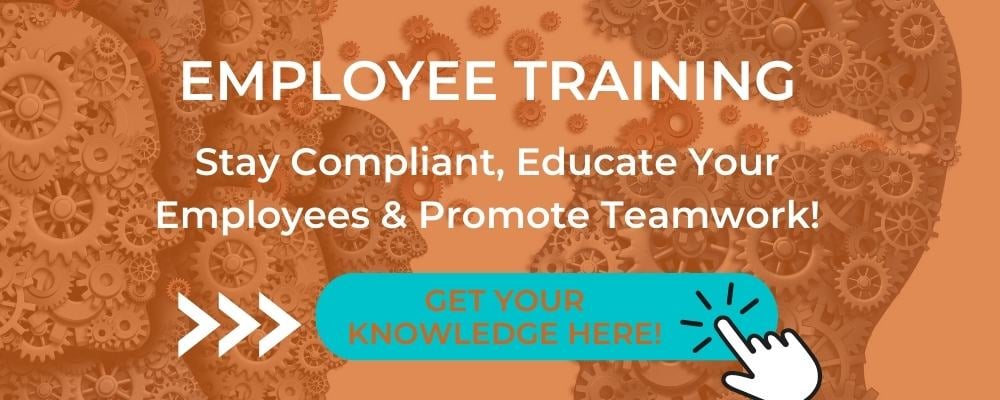Boundaries are everywhere and touch each aspect of your life. You have them at home, in family relationships, in airports, in school, with friends, neighbors and strangers, at work, and just about anywhere else that comes to mind.
Most people have at least a general set of boundaries that guide them through life, and they define those boundaries based on their ethics, morals and values. These boundaries help them navigate interactions with the people they encounter as they go about their day.
Every environment dictates which behaviors are acceptable and which are not. The same is true for every relationship. However, relationships change, and as they evolve (or dissolve), people's comfort level and intensity of their boundaries also change. Frustration, anger and disappointment will disband an otherwise effective team faster than a bolt of lightning.
Putting boundaries in place can prevent such flare-ups by helping every team member work within the margins of healthy boundaries. Team members are free to focus on creative solutions and feel safe from judgment when offering their ideas. When done right, boundaries delineate a (hopefully) progressive path forward as each team member works within the lines.
Boundaries Make The Work Go "Round
There are several different boundary categories. The five below are common boundaries found in the workplace.
5 workplace boundarY CATEGORIES
-
communication boundaries
-
time boundaries
-
priority and workload boundaries
-
emotional and intellectual boundaries
-
physical boundaries
We'll tackle these definitions shortly.
Not everyone likes to impose boundaries, and some managers and employees say they are an imposition because they don't want to be held accountable to rules and structure. But when people don't have guidelines and structure, chaos ensues, and you will all walk a perpetual path of wasted effort.
“Boundaries are a part of self-care. They are healthy, normal, and necessary.” - Doreen Virtue
Boundaries-Defining What Will Happen and What Won't
Picture a children's shape sorter box. It's a wood box with shapes on each side and a corresponding piece that drops inside the box when matched correctly.
The shapes represent behaviors, goals and purposes the leader has set forth as acceptable. The box will accept the blocks that align with its shape (behaviors and goals) but prevent others from entering.
A good leader can see when a boundary is not furthering the progress to reach the goal and will adjust the shapes (or boundaries) accordingly.
Creating meaningful boundaries can be tricky. So, how can leaders set boundaries that will positively impact the team?
An article written by the One2One team states four ways to make boundaries meaningful:
4 WAYS TO mAKE bOUNDARIES mEANINGFUL
-
Mutually agree upon limits with our people (what is in-scope and what is out-of-scope)
-
Don't make the boundaries overly restrictive (setting finite limits may over constrain our people)
-
Set engagement rules for boundaries (where and when can our people push the boundaries and when do we need to address them together)
-
Set collaboratively with our people (make boundaries overly adaptive, not overly constrained)
As a leader, you define what should and should not happen within your team. And because the success or failure of the project lands squarely on your shoulders, it will be your guidance, support and strategic planning (or lack of) that bring you the win (or loss).
Workplace boundaries aren't one size fits all, and what works for one person may need to be adjusted for another. And don't forget that you must not only work within the boundaries you set up but also enforce any boundary breakers.
Boundaries- 5 Tips For the Workplace
Boundaries should be used to create an environment where people feel valued, safe and trust their teammates and leadership. As mentioned earlier, there are 5 (or more) boundaries you can establish and maintain in the workplace.
1.physical boundaries
Physical boundaries involve your body and the immediate space around it. Set a standard of expectations in your daily routine, and f your space is violated, be assertive and clear about the infraction.
Standard expectations could be:
• offer handshakes over hugs
• take your after-lunch walk alone
• say no to working on the weekends
• take your sick days and your mental health days
• have a "tell" to show other employees that you're busy (i.e. wearing headphones or closing your door).
• set your working hours-and stick to them
2.emotional and intellectual boundaries
Emotional boundaries help you process your emotions at work, allowing you to separate your feelings from how someone else may feel without negating the need for empathy.
Examples of emotional boundaries include:
• avoiding engaging in someone's bad mood
• delegating work to others appropriately
• talking to your manager about how you prefer to receive feedback
• not participating in doubling down on other's negative feelings
• not allowing someone else's bad mood to affect you
• choosing to stay away from negative people
3.workload boundaries
Overworked and underpaid, another day, another dollar… phrases like these came about because employees worked hard for little reward. Do not take more work than you can complete in a week.
If the boss wants to hand you more work or coworkers ask for help, you can say:
• oh, man! I know that stress, and I feel for ya. I'd take it on if I had time, but I'm already overbooked.
• i can do that for you if you take this for me. I can't do them both.
• sure, that's not a problem, but I will need more time to complete it.
4.time boundaries
Time is a big sneak; it will crawl away right under your nose and not get caught until it's too late. Boundaries can help prevent "watercooler" chat afternoons and visits at your desk from the coworker who is fighting with the neighbor about barking dogs.
Some suitable time boundary replies could be:
• "thank you for the invitation to lunch. that place is so slow I couldn't possible make it back on time."
• "I'm sorry I can't attend that meeting this afternoon, i am on a time constraint and really need to focus on finishing out projects."
• "i'd really love to hear about your neighbor's reply, but can we pick this up after work? i need to finish these layouts."
5.communication boundaries
There is a time and a place for everything. Work matters should be discussed at work unless there is an emergency. Avoid receiving work texts on personal texts and politely suggest alternative communication methods.
Some things you could say might be:
• "unless it's urgent, i don't answer my work phone outside of working hours. you can call my personal number if you would like to chat."
• "i really try not to mix work communication with personal communication because it's easier to find old messages i may need if it's all in one place."
As a team leader, your time needs to be valued and maximized, and the team needs to know they can reach you should an emergency arise. Establishing clear boundaries builds trust and stability among team members.
Still, boundaries are bound to be broken, and you must be willing to accept the responsibility of enforcing them because the consequences are far more significant when you don't.
Setting boundaries is a topic that could be touched upon in employee training programs. These programs offered by the employer are not only key methods to improving the effectiveness, success, productivity and retention of your current workforce, but they also serve as an essential addition to your benefits package to attract future employees.
And it’s not just about retention. Good employee training and development programs can directly impact your bottom line. Learn about the Ulliance Training & Development Program
When you partner with Ulliance, our Life Advisor Consultants are always just a phone call away to teach ways to enhance your work/life balance and increase your happiness. The Ulliance Life Advisor Employee Assistance Program can help employees and employers come closer to a state of total well-being.
Investing in the right EAP or Wellness Program to support your employees will help them and help you. Visit https://ulliance.com/ or call 866-648-8326.
The Ulliance Employee Assistance Program can address the
following issues:
• Stress about work or job performance
• Crisis in the workplace
• Conflict resolution at work or in one’s personal life
• Marital or relationship problems
• Child or elder care concerns
• Financial worries
• Mental health problems
• Alcohol/substance abuse
• Grief
• Interpersonal conflicts
• AND MORE!
References
9 Ways to Set Better Boundaries at Work. (2022, 05 04). Retrieved from coursera: https://www.coursera.org/articles/how-to-set-boundaries
Hailey, L. (2021). How to Set Boundaries: 5 Ways to Draw the Line Politely. Retrieved from Science of People: https://www.careercontessa.com/advice/healthy-boundaries-at-work/


